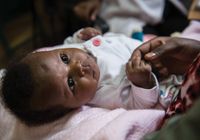
While under five mortality and infant mortality rates have improved considerably in Ethiopia, neonatal mortality rates have remained high with 39 deaths per 1000 live births in 2000 to 27 in 2020[1]. As a result, neonatal conditions are now considered to be contributors for 58% of Ethiopia's disability-adjusted life years[2].
It is against this backdrop, that UNICEF in close collaboration with the Federal Ministry of Health organised a sensitisation workshop in Ethiopia in August 2019 to advocate for the importance of prioritising newborn health in humanitarian contexts and raise awareness about global guidance available to stakeholders to assist in designing, managing, monitoring and evaluating newborn health services within humanitarian settings, drawing on the Newborn Field Guide.
In total 47 officials from regional health bureaus, Federal Ministry of Health and sub-city health offices participated from 12 regions across the country. Following an overview of the key recommendations from the Newborn Field Guide, participants broke out into groups to identify existing strengths, weaknesses, threats and opportunities in their regions. Participants acknowledged the absence of quality and sustainable newborn health services in crises affected contexts, such as the IDP camps in Southern Ethiopia. At the end of the workshop participants also committed to using the Newborn Field Guide to sensitise counter parts and colleagues in their respective regions about the need to prioritise newborn health at all levels of care.
7.3.1 Recommendations
There was consensus amongst participants on the following recommendations. These were consistent across Uganda, Kenya and Ethiopia.
- Strengthening community engagement to identify and address community bottlenecks
- Strengthen linkages between refugee health facilities and host population facilities
- Better use of data from the surveillance team ensures preparedness and effective response in time
- Conducting training of managers, health professionals, community gate leaders and other stakeholders on newborn and patient friendly services
- Improving logistical support and redistribution of commodities
- Improving scientific evidence and innovation on models of care in fragile and humanitarian settings
- Mainstream existing guidelines with the newborn health in humanitarian situations

